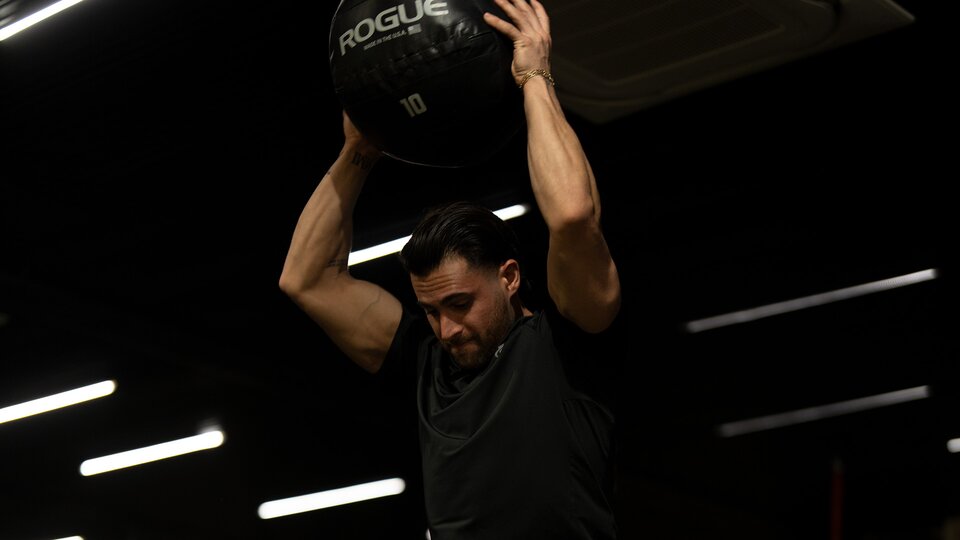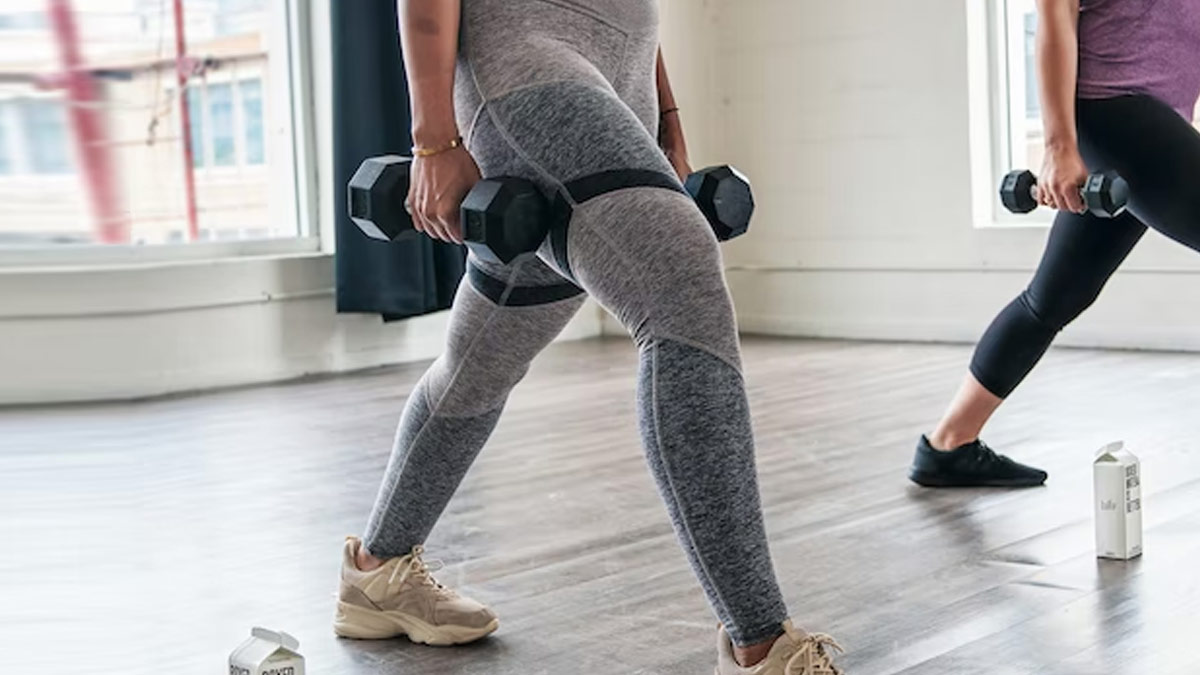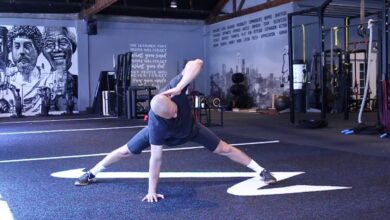
How To Fix The 5 Most Common Workout Mistakes
How to fix the 5 most common workout mistakes: We all want to get the most out of our workouts, but it’s easy to fall into bad habits that can hinder our progress and even lead to injury. From skipping warm-ups to neglecting nutrition, there are a number of common mistakes that we all make from time to time.
But don’t worry, it’s never too late to learn from our mistakes and make positive changes. In this post, we’ll explore five of the most common workout mistakes and how to fix them.
By understanding these mistakes and implementing the tips provided, you can take your workouts to the next level and achieve your fitness goals. Get ready to learn, improve, and crush your next workout!
Incorrect Form: How To Fix The 5 Most Common Workout Mistakes

Proper form is crucial for maximizing workout effectiveness and minimizing the risk of injury. When you perform exercises with incorrect form, you may not target the intended muscle groups, reduce the effectiveness of the exercise, and increase the risk of strains, sprains, and other injuries.
Fixing those common workout mistakes can be the difference between a plateau and a breakthrough. Whether you’re struggling with proper form, inconsistent routines, or lack of motivation, it’s essential to address these issues head-on. And for those winter days when the gym seems too far, consider stepping up your walking game with these helpful tips: 5 ways to step up your walking game this winter.
By combining these strategies with a focus on correcting your workout mistakes, you’ll be well on your way to reaching your fitness goals, even in the coldest months.
Common Form Errors in Squats
Squats are a compound exercise that targets multiple muscle groups in the lower body, including the quads, glutes, hamstrings, and calves. However, improper form can reduce the effectiveness of the squat and increase the risk of injury.
- Knee valgus (knees caving in):This occurs when the knees move inward during the squat, placing stress on the knees and potentially leading to injuries. To correct this, focus on keeping your knees in line with your toes throughout the movement.
- Back rounding:A rounded back during squats can put stress on the spine and increase the risk of back pain. To maintain a neutral spine, engage your core muscles and keep your chest up throughout the movement.
- Not squatting deep enough:A shallow squat reduces the range of motion and limits the activation of the target muscles. Aim to squat until your thighs are parallel to the floor, or even lower if possible.
Common Form Errors in Deadlifts
The deadlift is another compound exercise that engages multiple muscle groups, including the back, legs, and core. Maintaining proper form is essential for this exercise, as improper form can lead to serious injuries.
- Rounded back:A rounded back during the deadlift can put excessive stress on the spine, increasing the risk of back pain and injury. To maintain a neutral spine, keep your back straight and engage your core muscles throughout the lift.
- Not keeping the bar close to the body:Keeping the barbell close to the body throughout the lift helps maintain proper form and reduces the strain on the back. Avoid pulling the bar away from the body, which can increase the risk of injury.
- Using too much weight:Lifting too much weight can compromise form and increase the risk of injury. Start with a weight that allows you to maintain proper form throughout the lift, and gradually increase the weight as you get stronger.
Common Form Errors in Push-ups
Push-ups are a bodyweight exercise that targets the chest, shoulders, and triceps. Although a simple exercise, improper form can reduce the effectiveness of the push-up and increase the risk of injury.
- Sagging in the middle:A sagging midsection during the push-up can put stress on the lower back and reduce the effectiveness of the exercise. Engage your core muscles and keep your body in a straight line from head to toe throughout the movement.
- Not going low enough:A shallow push-up reduces the range of motion and limits the activation of the target muscles. Aim to lower your chest until it touches the floor, or as close as possible.
- Elbows flaring out:Elbows flaring out during the push-up can put stress on the shoulders and increase the risk of injury. Keep your elbows close to your body throughout the movement.
Overtraining
Overtraining is a common issue among fitness enthusiasts, particularly those new to exercise or trying to push their limits. It occurs when you push your body too hard without adequate rest and recovery, leading to a decline in performance and potential injury.
Signs and Symptoms of Overtraining
Overtraining can manifest in various ways, and recognizing these signs is crucial for preventing further damage and promoting recovery.
Want to maximize your workout results? Avoid common mistakes like improper form or neglecting rest days. Fueling your body is also key, and a delicious and easy option is these slow cooker vegan mashed sweet potatoes. They’re packed with nutrients and perfect for post-workout recovery.
By focusing on these key areas, you’ll be well on your way to achieving your fitness goals.
- Increased Fatigue:Persistent fatigue, even after adequate sleep, is a hallmark of overtraining. You might feel constantly drained and unable to perform at your usual level.
- Muscle Soreness:While some muscle soreness is normal after exercise, persistent and intense soreness, even after a day or two of rest, can be a sign of overtraining.
- Decreased Performance:A noticeable decline in your workout performance, such as lifting lighter weights or running slower, is a clear indicator that you may be overtraining.
- Increased Resting Heart Rate:Your resting heart rate should gradually decrease as your fitness improves. If you notice an increase, it could be a sign of overtraining.
- Loss of Motivation:Overtraining can lead to a loss of enthusiasm for exercise, making it difficult to stick to your workout routine.
- Sleep Disturbances:Difficulty falling asleep or staying asleep can be a sign of overtraining, as your body is constantly working to repair itself.
- Increased Risk of Injury:When you are overtrained, your body is more susceptible to injuries, as your muscles are fatigued and less able to handle the stress of exercise.
Importance of Rest and Recovery
Rest and recovery are as essential as exercise for achieving fitness goals. They allow your body to repair and rebuild muscle tissue, replenish energy stores, and prevent overtraining.
- Active Recovery:Incorporate light activities like walking, swimming, or yoga on your rest days to promote blood flow and reduce muscle soreness.
- Sleep:Aim for 7-9 hours of quality sleep each night to allow your body to fully recover and rebuild.
- Nutrition:Ensure you are consuming a balanced diet rich in protein, carbohydrates, and healthy fats to fuel your workouts and support recovery.
- Hydration:Drink plenty of water throughout the day to stay hydrated and support muscle function.
Sample Weekly Workout Schedule
Here is a sample weekly workout schedule that incorporates rest days and active recovery:
| Day | Workout | Notes |
|---|---|---|
| Monday | Strength Training (Upper Body) | Focus on compound exercises like bench press, rows, and overhead press. |
| Tuesday | Active Recovery | Go for a light walk, swim, or do some yoga. |
| Wednesday | Strength Training (Lower Body) | Focus on compound exercises like squats, deadlifts, and lunges. |
| Thursday | Rest | Give your body a full day of rest. |
| Friday | Cardio | Choose a cardio activity you enjoy, such as running, cycling, or swimming. |
| Saturday | Active Recovery | Engage in a low-intensity activity like stretching or foam rolling. |
| Sunday | Rest | Allow your body to fully recover and prepare for the next week. |
Remember, this is just a sample schedule, and you may need to adjust it based on your individual needs and goals. It is crucial to listen to your body and take rest days when needed.
Neglecting Nutrition

Your diet plays a crucial role in supporting your workout performance and recovery. Just like a car needs fuel to run, your body needs proper nutrition to function at its best during and after exercise.
The Importance of Nutrition for Workout Performance and Recovery, How to fix the 5 most common workout mistakes
Eating a balanced diet that provides your body with the necessary nutrients is essential for optimizing your workout performance and facilitating a speedy recovery.
- Energy for Exercise:Carbohydrates are your body’s primary energy source, providing the fuel needed for your workouts.
- Muscle Building and Repair:Protein is essential for muscle growth and repair, especially after intense exercise.
- Fueling Recovery:Proper nutrition helps replenish glycogen stores, repair muscle tissue, and reduce inflammation, all contributing to a faster recovery.
- Maintaining Immune Function:A healthy diet supports a strong immune system, which is crucial for fighting off infections and staying healthy.
Fueling Your Workouts
Prioritizing nutrient-rich foods before, during, and after your workouts can significantly impact your performance and recovery.
Pre-Workout Nutrition
A pre-workout meal should be light and easily digestible, providing a steady release of energy.
Getting back into a workout routine after a break can be tough, but fixing common mistakes can make a big difference. Maybe you’re overtraining, neglecting proper form, or skipping warm-ups. If you’re struggling to get back on track, it might be helpful to check out these ways to rediscover lost healthy habits to get you motivated.
Once you’ve got your groove back, you can focus on making sure your workouts are effective and safe by avoiding those common pitfalls.
- Carbohydrates:Oatmeal, whole-grain toast, bananas, or a small portion of rice are good options.
- Protein:Eggs, Greek yogurt, or a protein shake can help maintain muscle mass.
During Workout Nutrition
For workouts lasting longer than an hour, consider consuming a light snack to maintain energy levels.
- Carbohydrates:Sports drinks, energy gels, or dried fruit can provide quick energy.
Post-Workout Nutrition
A post-workout meal should focus on replenishing glycogen stores and promoting muscle repair.
- Carbohydrates:Sweet potatoes, brown rice, or quinoa are excellent sources of complex carbohydrates.
- Protein:Lean chicken, fish, or a protein shake can help with muscle recovery.
Hydration and Electrolytes
Staying hydrated is essential for exercise performance and recovery. Water helps regulate body temperature, transport nutrients, and remove waste products.
- Electrolyte Importance:Electrolytes, such as sodium, potassium, and magnesium, are lost through sweat during exercise. Replenishing these electrolytes is crucial for maintaining proper muscle function and preventing cramping.
“Drink water before, during, and after your workouts to maintain optimal hydration.”
Lack of Consistency

Consistency is the key to unlocking your fitness potential. It’s not about how hard you train on a single day, but rather about the consistent effort you put in over time that truly shapes your body and mind. Think of it as a marathon, not a sprint.
Even small, consistent efforts add up to significant results in the long run.
Strategies for Consistent Workouts
Developing a consistent workout routine requires a thoughtful approach. Here are some strategies that can help you stick to your fitness goals:
- Set Realistic Goals:Don’t try to do too much too soon. Start with small, achievable goals and gradually increase the intensity and duration of your workouts. This approach helps prevent burnout and fosters a sense of accomplishment that motivates you to keep going.
- Find an Activity You Enjoy:If you don’t enjoy your workouts, you’re less likely to stick with them. Explore different activities until you find something that you genuinely look forward to doing. It could be anything from dancing to swimming to hiking. The key is to choose something that fits your interests and preferences.
- Schedule Your Workouts:Treat your workouts like any other important appointment. Schedule them into your calendar and make them a non-negotiable part of your day. This helps you prioritize fitness and prevents last-minute excuses from getting in the way.
- Find a Workout Buddy:Having a workout partner can provide motivation, accountability, and a fun social aspect to your fitness journey. You can encourage each other, push each other to work harder, and celebrate each other’s successes. This shared experience can make the process more enjoyable and sustainable.
- Don’t Be Afraid to Take Breaks:Rest and recovery are essential for muscle growth and preventing injuries. Allow your body adequate time to recover between workouts. Listen to your body and don’t push yourself too hard. A well-rested body is a more resilient body.
Tracking Your Progress
Tracking your progress helps you stay motivated and makes you accountable for your efforts. Here are some ways to monitor your fitness journey:
- Keep a Workout Log:Record the date, time, type of workout, duration, intensity, and any other relevant information. This log provides a visual representation of your progress and helps you identify patterns and areas for improvement.
- Take Progress Photos:Capture your body composition at regular intervals to see how your shape is changing over time. This provides a visual reminder of your dedication and hard work. Be sure to take photos in the same lighting and clothing for accurate comparison.
- Measure Your Body Composition:Use a tape measure to track changes in your waist, hips, and other areas. You can also use a body fat scale to monitor your body fat percentage. These measurements can help you assess your progress and adjust your training plan as needed.
- Set Realistic Goals:Don’t expect to see dramatic changes overnight. Be patient and consistent, and you will eventually achieve your fitness goals. Remember that fitness is a journey, not a destination.
Outcome Summary
By addressing these common workout mistakes, you can maximize your results, reduce your risk of injury, and enjoy a more fulfilling fitness journey. Remember, consistency is key, so make small changes gradually and celebrate your progress along the way. So, ditch the bad habits, embrace the good ones, and get ready to see amazing results.





